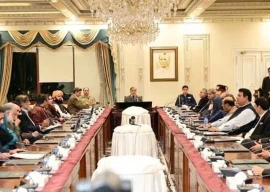
Ashraf introduced Larkana and Dera Murad Jamali to the BoG at the expense of Karachi and Lahore and the reason was fairly obvious — he wanted to secure votes. As expected, a flurry of court petitions paved the way for an intervention from the court, which somehow put PCB activities in jeopardy.
In this scenario, it is quite clear where the blame should lie — the cricket board.
To understand the issue, one needs to look at the structure of the PCB, which indeed has a duly approved constitution. However, this very constitution, which has also been challenged in the Sindh High Court, does lead to a lot of questions over its democratic nature.
The chairman controls virtually everything with the consent of the BoG, which approves every move of the boss (chairman) and thus, the practice is called duly democratic.
The chairman features in the BoG as well as in all other important matters. Right from the financial affairs to the team selection matters, the authority of the PCB chairman is evident everywhere.
Enough has already been said on the matter and it’s time to move towards a tangible solution, which could be acquired by either studying the glorious era of Pakistan cricket — in terms of on-field performances — or by analysing the set-up of other relatively successful cricket boards around the world.
The Board of Control for Cricket in India (BCCI) is administratively considered as one of the strongest cricket set-ups where even the board’s head could be forced to step down if a situation calls for it. In India, zonal heads take over as the BCCI chief, on rotation basis for a period of three years.
Why can’t the PCB take every component of this system on board to ensure democracy in both letter and in spirit?
Since the regions and associations which produce and nurture cricketers at the grassroots level, are the basic components of the Pakistan cricket setup, their services should be duly recognised and, apart from constituting a hand-picked BoG, a sole body should be shaped with representation of all the regional associations and departments and all major decisions should be put before them and decided on the basis of majority votes.
As per my understanding, regional bodies are more democratic as they hold regular elections to choose officials — a practice that is not common in the PCB.
Published in The Express Tribune, August 28th, 2013.
Like Opinion & Editorial on Facebook, follow @ETOpEd on Twitter to receive all updates on all our daily pieces.
COMMENTS (2)
Comments are moderated and generally will be posted if they are on-topic and not abusive.
For more information, please see our Comments FAQ




































-(1)1714378140-0/AliAminMaryam-(4)-(1)1714378140-0-270x192.webp)

1714370039-0/ojwilson-(1)1714370039-0-270x192.webp)







It is a well-written article, raising a perfectly valid point. Considering the deplorable state of the Pakistan Cricket Board and its tendency for nepotism, the aforementioned measure to democratize its decision making mechanism should be taken.
The writer makes a good point. The first step in this regard should be to identify a criterion for assigning seats in PCB's board of governors. It makes sense that Lahore and Karachi should have more seats due to their larger role, but then smaller districts should be given due representation and protection also. Moreover, it is not clear the best way to organize this is along district lines or on the basis of regional zones. Imran Khan is in favour of limiting the top tier of domestic cricket to 6 teams as explained here: http://www.pakmonitor.com/fixing-pakistans-cricket-structure-imran-khans-recipe/ While I am not totally sure 6 is the best number, he does have a point that having too many teams results in lowering the standard. For this reason, organizing the structure on the basis of districts is probably not the best approach. Better to have regional zones. Districts should be the next tier.